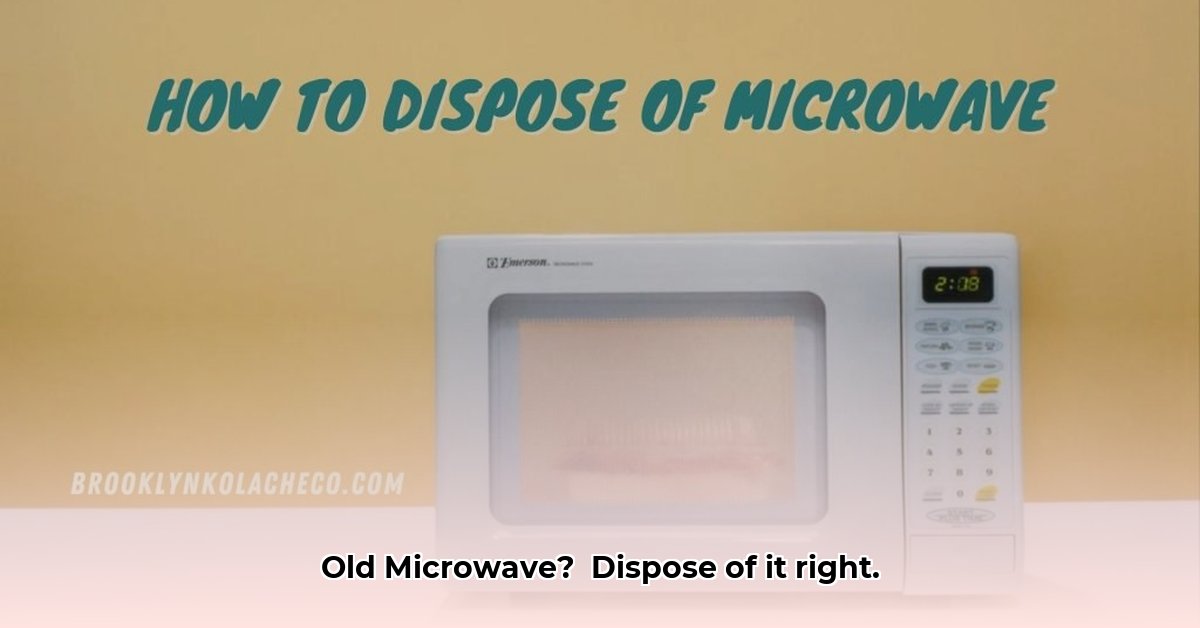Got an old microwave ready for a replacement? Disposing of it properly is crucial for safety and the environment. This guide provides easy-to-follow instructions for safe and responsible microwave disposal.
Safety First! Precautions Before Disposal
Before you move your microwave, unplug it. Microwaves contain a capacitor that stores electricity, even after being unplugged. Discharging the capacitor is essential to prevent electric shock. While calling a qualified technician is the safest approach, if you choose to do it yourself, consult a detailed online tutorial. Do not attempt this without proper guidance. After unplugging, allow the microwave to sit for a few minutes to ensure any residual energy dissipates.
Choosing Your Disposal Method
Several options exist for microwave disposal:
- Recycling (Best Option): This is the most environmentally responsible choice. Recycling keeps harmful materials out of landfills and allows valuable components to be reused.
- Donation (For Working Microwaves): If your microwave still functions, donating it to a charity, shelter, or someone in need is a great way to extend its lifespan.
- Haul-Away Services (Convenient but May Cost): Junk removal services will pick up and dispose of your microwave, but typically for a fee.
- Landfill (Last Resort): Due to potential environmental hazards, landfills should be your last option. Some areas may even have regulations against this.
Step-by-Step Recycling Guide
Recycling is the preferred method. Here’s how:
-
Locate a Recycling Center: Search online for “microwave recycling near me” or “e-waste recycling near me”. Check your local government’s website or Earth911 for resources. Some retailers like Best Buy also have recycling programs. For Fremont, CA residents, the Fremont Recycling & Transfer Station (RE:Source) is a likely option, but always confirm directly with them.
-
Prepare Your Microwave: Clean the interior and exterior. Do not disassemble any parts, especially the capacitor. Leave it intact for professionals to handle.
-
Transport Safely: Secure the microwave in your vehicle to prevent shifting during transit. Ask for assistance if lifting is difficult.
Donating Your Microwave
If your microwave is still operational:
- Assess its Condition: Ensure it’s clean and in safe working order.
- Find a Donation Center: Contact local charities, shelters, thrift stores (like Goodwill or Salvation Army), or community centers. Online platforms like Freecycle or Craigslist can also connect you with people in need.
- Prepare for Donation: Clean the microwave thoroughly.
Other Disposal Options
- Haul-Away Services: Contact your local waste management company or search online for appliance removal services. Obtain quotes from several companies to compare prices.
- Landfill (Last Resort): If this is your only option, check your local regulations for any restrictions.
Finding Local Resources
- Local Government Website: Check your city or county website for information on recycling programs, special collection events, and regulations.
- Retailer Websites: Some major appliance retailers provide information about recycling or take-back programs.
- Online Directories: Resources like Earth911 can help you locate nearby recycling centers.
Why Proper Disposal Matters
Improper microwave disposal can lead to environmental harm through the leaching of hazardous materials in landfills. Recycling recovers valuable resources and minimizes environmental impact. Ongoing research continually explores better recycling and reuse methods. Staying informed about local recommendations ensures responsible appliance disposal. By choosing an appropriate disposal method, you contribute to a healthier planet. Remember, responsible disposal benefits everyone.
- How to Get a Free Mold Inspection (and Avoid the Scams) - April 23, 2025
- How to Flush a Toilet Without Water: A Step-by-Step Guide - April 23, 2025
- The Complete Guide to Safely Disposing of Light Globes - April 23, 2025










